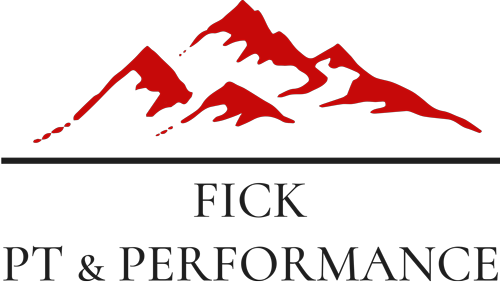Tennis elbow, medically known as lateral epicondylitis, is a common and painful condition that affects not only tennis players but individuals engaged in various activities that involve repetitive arm and wrist motions. This comprehensive blog post aims to shed light on the causes, symptoms, treatment options, and prevention strategies for tennis elbow, providing valuable insights and guidance with the expertise of Fick PT & Performance.

Understanding Tennis Elbow
Tennis elbow occurs when the tendons that attach to the lateral epicondyle of the humerus become damaged or inflamed due to repetitive stress. While tennis players may be susceptible, anyone engaging in activities such as typing, painting, or gripping tools can develop this condition.
Recognizing the Signs and Symptoms
Tennis elbow, also known as lateral epicondylitis, manifests a distinct set of symptoms, often making its presence unmistakable. Individuals experiencing this condition typically report pain concentrated on the outer side of the elbow. Alongside this discomfort, weakness in the affected arm becomes apparent, reducing the strength and functionality of the elbow. Further complicating matters, stiffness and difficulty in gripping objects arise, making even routine tasks challenging. Notably, pain intensifies when engaging in activities that require gripping or lifting, adding to the frustration. In some cases, individuals may also experience radiating pain extending into the forearm. Tennis elbow’s causes are multifaceted and may include overuse of forearm muscles, improper technique during activities, insufficient warm-up or cool-down routines, age-related wear and tear on the tendons, and the demands of certain occupations that entail repetitive arm movements. Understanding these factors is crucial for effective treatment and prevention strategies.
Seeking Professional Help at Fick PT & Performance
When it comes to addressing tennis elbow, seeking professional assistance is paramount. The diagnostic process typically encompasses a thorough physical examination, enabling healthcare providers to assess the extent of the condition. Additionally, a review of one’s medical history and activities is crucial in understanding the context and potential causes of the injury. Furthermore, imaging tests may be employed to rule out other underlying conditions that may contribute to the symptoms.
At Fick PT & Performance, individuals dealing with tennis elbow can expect customized rehabilitation plans tailored to their specific needs. These comprehensive treatment strategies aim to alleviate pain and promote healing. They often encompass manual therapy techniques designed to relieve pain and tension in the affected area. Targeted exercises are incorporated to strengthen the forearm and wrist muscles, enhancing overall arm function. Modalities like ice and ultrasound may be utilized for effective pain management. In addition to these therapeutic measures, Fick PT & Performance offers valuable ergonomic recommendations to optimize daily activities and reduce strain on the affected arm. Moreover, education on proper technique and prevention strategies equips individuals with the knowledge needed to prevent future occurrences of tennis elbow, ensuring a well-rounded and effective rehabilitation process.
Preventing Tennis Elbow
Preventing the onset or recurrence of tennis elbow is a proactive approach to safeguarding one’s arm health and overall well-being. Two key components come into play when considering prevention strategies: ergonomics and technique, and strengthening and flexibility.
A. Ergonomics and Technique: First and foremost, maintaining proper technique during activities that involve repetitive arm movements is pivotal in minimizing the risk of developing tennis elbow. This includes paying close attention to posture and form, whether it’s during sports, work-related tasks, or other daily activities. Using ergonomic tools and equipment can significantly aid in reducing strain on the arm and wrist. Additionally, taking regular breaks to rest and reset the arm muscles is essential to avoid overuse, which can contribute to the development of this condition.
B. Strengthening and Flexibility: Secondly, a comprehensive approach to prevention involves enhancing forearm and wrist strength through targeted exercises. Incorporating exercises designed to build and maintain strength in these areas can fortify the muscles and tendons, making them more resilient to stress. Furthermore, incorporating regular stretching routines can help maintain flexibility, reducing the likelihood of muscle tightness and strain. It’s crucial to progress gradually in the intensity of activities, ensuring that the body is adequately prepared for increased demands and minimizing the risk of overexertion.
By adhering to these preventive measures, individuals can significantly reduce the likelihood of experiencing tennis elbow and enjoy a more active, pain-free lifestyle.
Tennis elbow can be a debilitating condition, but with the expert care and guidance provided by Fick PT & Performance, individuals can overcome it and regain pain-free use of their arms. If you or someone you know is experiencing symptoms of tennis elbow, do not hesitate to seek professional help.
Contact Fick PT & Performance at (720) 480-2866 today to schedule a consultation and embark on a journey towards recovery and optimal musculoskeletal health. Don’t let tennis elbow limit your activities or cause unnecessary discomfort.
Our team is committed to helping you conquer tennis elbow, providing you with the tools and knowledge to prevent future injuries and enjoy a pain-free, active lifestyle.

